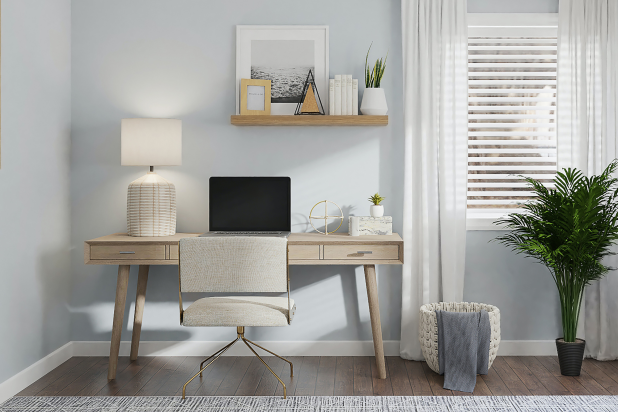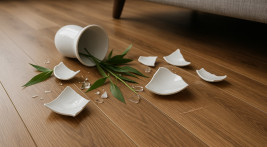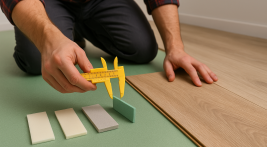Skirting Boards – White or Floor-Colored
These are currently the two most popular options. White skirting boards are considered a classic and reliable choice, while those in the color of the floor offer the possibility of visually enlarging the space. For some, the reference point may also be the color of the doors or walls.
The final effect also largely depends on their thickness, type, and the material they are made from. When deciding whether to choose white, black, or floor-colored skirting boards, consider the style of the interior you're furnishing.
Skirting Boards in the Color of the Floor
Floor-colored skirting boards are worth considering especially when the room is small and you want to visually enlarge it. A light floor paired with skirting boards in the same shade will give the space a sense of openness and lightness. For added effect, choose white or light gray walls to create the perfect base for a Scandinavian or Japandi style.
In larger interiors with dark flooring, choosing skirting boards that match the panels helps create a cohesive look. They emphasize the natural beauty of the floor and enhance the impression of a stylishly arranged space. Just remember that skirting boards have their own thickness—make sure they will cover any expansion gaps.
White Skirting Boards
Minimalist, universal, and timeless—these three words describe white skirting boards well. They go with any floor and suit any style. That’s why they are often a safe choice for those who prioritize functionality over aesthetics. However, this doesn’t mean they’re boring. White skirting boards can also be visually striking and enhance the overall look of a room.
It’s worth considering unique skirting board designs, especially in living rooms or dining areas. These naturally elegant spaces pair well with classic or glamour styles. White skirting boards in the living room can be grooved, harmonizing nicely with classic interior moldings. For a glamour effect, combine them with a marble-look floor for a luxurious feel.
Referencing the optical enlargement effect created by light floors with matching skirting boards, the same result can be achieved with white skirting boards combined with white walls. This is a great option for Scandinavian or minimalist interiors.
Dark Floors and Skirting Boards
Light floors naturally pair well with both matching and white skirting boards. Dark floors, however, can be more challenging when choosing the right trim. Is white a good choice in this case? There are a few possible approaches:
White walls and dark floor with skirting boards. This is a common setup in living rooms where elegance is key. Dark tones pair well with white walls and, in turn, with white skirting boards. Still, skirting boards in the color of the floor would also be a suitable choice.
Dark walls and dark floor with skirting boards. White skirting boards here would create a strong contrast. A better option might be black skirting boards or ones in the same tone as the floor—dark brown or dark gray, depending on the floor design.
White skirting boards with dark doors and floor often raises some doubts. Do white skirting boards match dark doors? Some choose skirting boards to match the door color. If you prefer contrast, make sure there’s cohesion with the floor color (white skirting boards in a room with white or very light flooring) or with the walls (white skirting boards and white walls).





